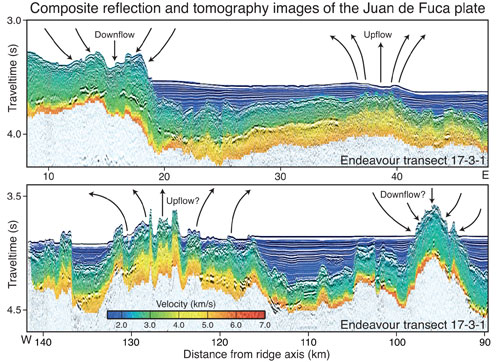Juan de Fuca plate from accretion to subduction
By:
Mladen Nedimovic
UTIG
| When: | Friday, September 28, 2012, 10:30 a.m. to 11:30 a.m. Join us for coffee beginning at 10:00 a.m. |
| Where: | Seminar Conference Room, 10100 Burnet Road, Bldg 196-ROC, Austin, Texas 78758 |
| Host: | Gail Christeson, UTIG |
Click for a Live Broadcast.

Abstract
Cascadia margin and the immediate offshore region are a natural laboratory for studies of
various tectonic and geologic processes of global importance. Crustal accretion, oceanic
plate evolution, subduction earthquake cycle, slab dehydration and intraslab seismicity are
some of the many processes that occur within a distance of only several hundred kilometers.
I will focus on presenting deep ocean basin observations made by interpreting reflection and
tomography images formed by analyzing multichannel seismic data collected across the
Pacific and Juan de Fuca plates. In the direction of increasing crustal age these are: a)
Localized lower crustal and Moho transition zone reflections; b) Differential rate of P-wave
velocity increase for layers 2A and 2B with crustal aging c) Direct and indirect images of
extensional faulting seaward from the trench. Localized lower crustal and Moho transition
zone reflections are interpreted as gabbro sills providing support for existence of complex
magmatic plumbing systems at mid-ocean ridges and for crustal generation hypothesis from
multiple magma bodies. Measured difernce in the velocity increase for layers 2A and 2B with
crustal aging suggests that the layer 2A evolution, which has generally been considered to
be rapid, is rather tepid in comparison to layer 2B evolution. Images of extensional faulting
seaward from the trench indicate that Juan de Fuca plate hydration becomes active at a
great distance from the trench but that it has limited depth penetration. This contrasts
numerous onshore observations that support abundant presence of water within the subduction
zone, suggesting that the JdF plate is significantly hydrated prior to subduction at the
trench.




